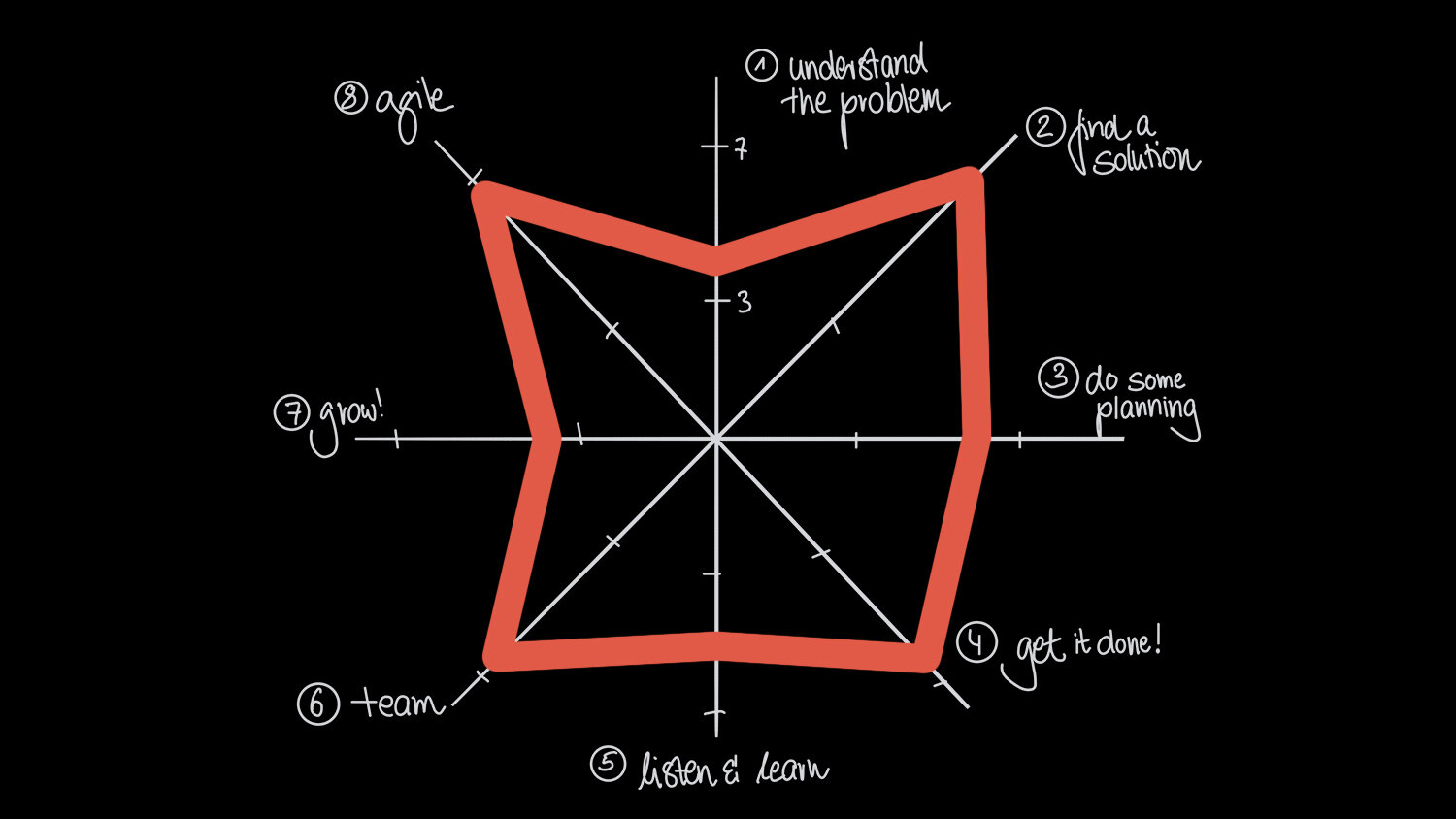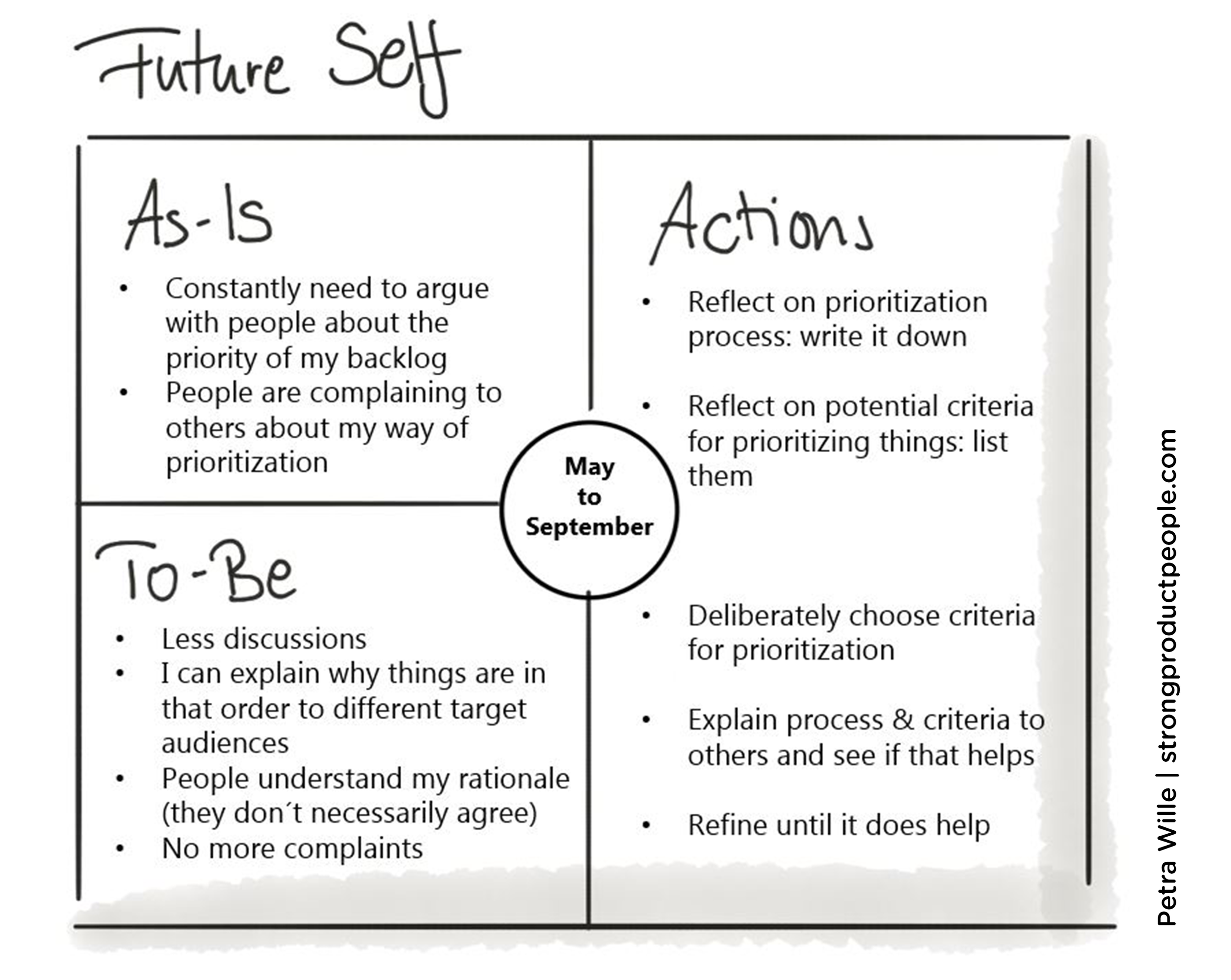The PMwheel as a Manager of Product Managers
The PMwheel is a tool I created back in 2016 to help product managers better understand their work and more clearly define what excellence in product management looks like.
If you want to learn more about the basics, I recommend you read this blog post:
The PMwheel – a Compass for the Product Manager Development Journey.
In this post, you will learn how to use the PMwheel as a manager of product managers.
Are you a product manager who would like to learn how to use the PMwheel to assess your own work? I break down how to do that in this post.
What Is the PMwheel?
The PMwheel has become a reliable compass for people who want to navigate their product career or develop their direct reports. It’s an approach that I have personally used in my work with clients ever since I developed it. If you want to learn more about the basics I recommend you to read this blogpost:
The PMwheel – a Compass for the Product Manager Development Journey
For managers, The PMwheel is a simple but powerful way to assess the responsibilities, skills, and knowhow of your product managers. Keep in mind that no two assessments for your product managers will be the same—some will be stronger in one area, while others will be stronger in others.
For managers, the process involves two stages:
The initial assessment
The collaborative assessment meeting
The Initial Assessment
To conduct the initial assessment, you’ll rate your product manager(s) on each activity on a scale of 0–7. For example:
If your product manager has absolutely nothing to offer, their score would be 0
If they are delivering above and beyond, their score would be 7
Use those scores to create a spiderweb diagram like this:
Use your scores to create a spiderweb on the PMwheel graphic
The Collaborative Assessment Meeting
Once your initial assessment is complete, it's time to involve your product manager. To do this, invite them to a collaborative assessment session (allow 90 minutes for this) and follow these steps:
Explain the framework: Use the steps outlined here to prepare your product manager for the session and explain how the session is designed to foster career conversations in a positive and structured way.
Ask them to rate themselves on the eight activities in the PMwheel: To help them with this part of the process, talk with them about each of the activities, highlighting different aspects using the example questions and then give them two to three minutes to read some more questions and rate themselves. It's useful to note here that it's less important to have a precise score and more about their initial gut feeling. The more you use the PMwheel over time, the easier this exercise will get.
Present the scores from your assessment: Explain why you arrived at the scores you gave. Don’t just highlight the shortfalls—be sure to let them know where you think they are already doing a great job.
Identify one area of improvement in this first session: You want them to succeed, so choose something small that's going to be easy to learn or to change.
Encourage feedback (even pushback) on your approach: If you find you're scoring them a 5 on something that they score themselves a 7, it's okay to discuss it. They might have good reasons and great examples that will encourage you to change your score. In other cases, it's okay if you agree to disagree. If you think they need to get better in certain aspects, but they think they're already nailing it, this can become a great topic to follow up on in a future one-on-one.
Ask them to create their personal development plan: I like to use the Future Self template for this. See my short example below. If this style works for you and your product manager, you can download the Future Self template here.
Set a date to follow up
With all of the above steps complete, set a date to follow up on the development plan action items so that you can continue moving forward. Ask your product manager how often they would like to have follow-up discussions. Some of my clients use it in every one-on-one as a framework for their conversations. Others use it three to four times a year. This really depends on your product manager and what they feel will be most beneficial. The main thing is to ensure you get the first follow-up date scheduled in this meeting to maintain momentum.
If you’d like to learn more about using the PMwheel and other tools to help develop your product managers, don’t hesitate to get in touch.

